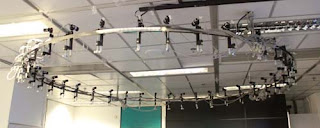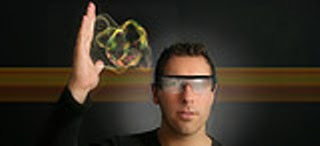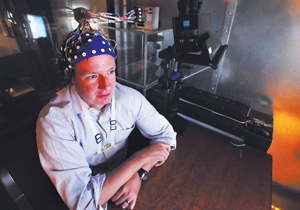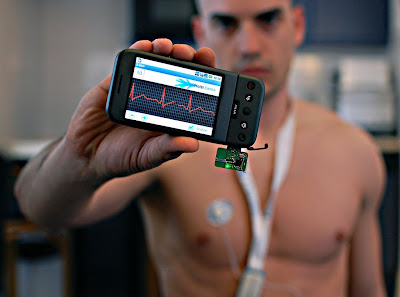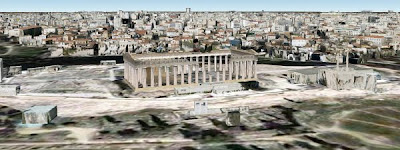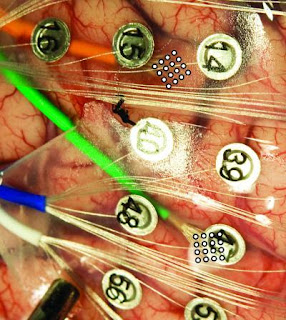For all the work that’s gone into developing educational media, even the most stimulating TV shows and video games leave kids stationary. Researchers at the MIT Media Laboratory are hoping to change that with a system called Playtime Computing, which gives new meaning to the term ‘computing environment’. The prototype of the Playtime Computing system consists mainly of three door-high panels with projectors behind them; a set of ceiling-mounted projectors that cast images onto the floor; and a cube-shaped, remote-controlled robot, called the Alphabot, with infrared emitters at its corners that are tracked by cameras mounted on the ceiling. But the system is designed to make the distinctions between its technical components disappear. The three panels together offer a window on a virtual world that, courtesy of the overhead projectors, appears to spill into the space in front of it. And most remarkably, when the Alphabot heads toward the screen, it slips into a box, some robotic foliage closes behind it, and it seems to simply continue rolling, at the same speed, up the side of a virtual hill. Among the symbols are letters of the Roman alphabet, Japanese characters, a heart and a pair of musical notes. When children attach the notes to the Alphabot, music begins to play from the system’s speakers, illustrating the principle that symbolic reasoning can cut across sensory modalities.

Another, vital element of the system is what the researchers call the Creation Station, a tabletop computer on which children can arrange existing objects or draw their own pictures. Whatever’s on the tabletop can be displayed by the projectors, giving children direct control over their environment. To make the Playtime Computing system even more interactive, the researchers have outfitted baseball caps with infrared light emitters, so that the same system that tracks the Alphabot could also track playing children. That would make it possible for on-screen characters — or a future, autonomous version of the Alphabot — to engage directly with the children. The researchers are eager, however, to begin experimenting with the new Microsoft Kinect, a gaming system that, unlike the Nintendo Wii, uses cameras rather than sensor-studded controllers to track gamers’ gestures. Kinect could offer an affordable means of tracking motion in the Playtime Computing environment, without requiring kids to wear hats. The prototype of the Alphabot, the researchers say, uses a few hundred dollars’ worth of off-the-shelf parts, and if the robot were mass-produced, its price would obviously fall. The researchers believe that simple, affordable versions of the Playtime Computing system could be designed for home use, while more elaborate versions, with multiple, multifunctional robots, could be used in the classroom or at museums.
More information:
http://web.mit.edu/newsoffice/2010/rolling-robot-1122.html

